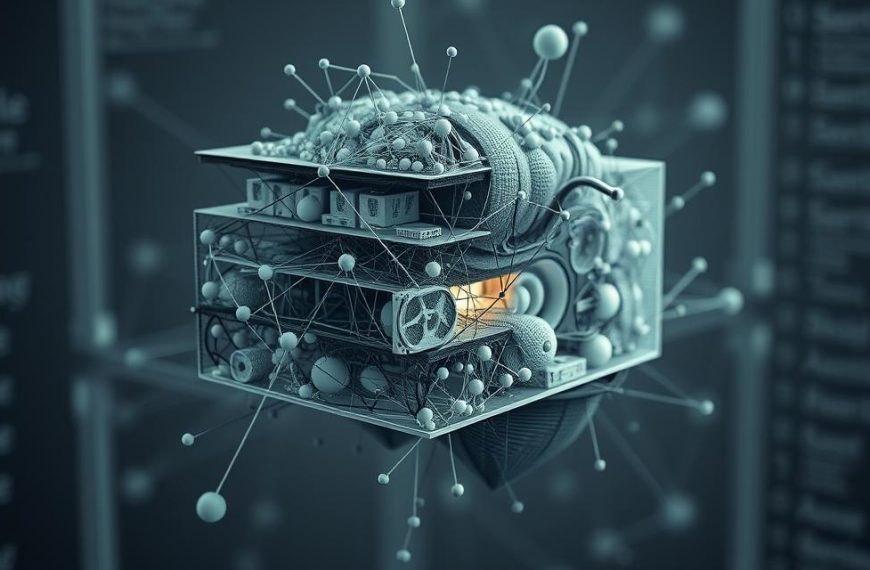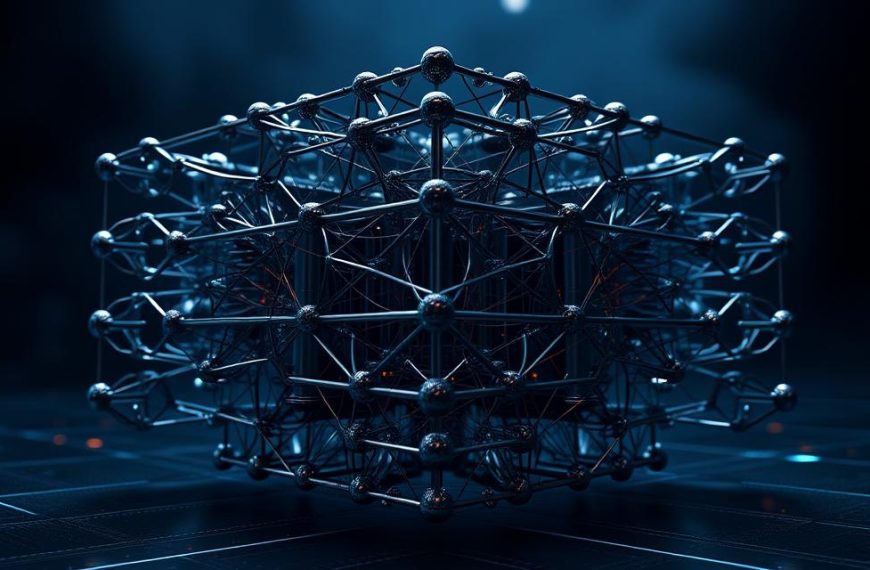Autonomous programs are transforming the way we interact with the blockchain ecosystem. These tools analyze market data and execute strategies without manual input, making them essential for modern DeFi operations. By leveraging machine learning, they provide unparalleled efficiency and accuracy.
2025 is shaping up to be a pivotal year for the convergence of blockchain and advanced technologies. Fetch.ai, a leader in this space, boasts a valuation of $1.59 billion, showcasing the growing demand for these solutions. Their 24/7 operational capability and emotional neutrality make them ideal for navigating fragmented, multi-chain markets.
With a market cap of $4.41 billion for related coins, the industry is experiencing rapid growth. Monthly transactions on platforms like Olas have surged by 30%, reflecting their increasing adoption. These tools are not just trading bots; they are intelligent systems designed to optimize yields and support DAO governance trends.
Introduction to AI Crypto Agents
Innovative systems are reshaping how we approach decentralized finance and trading. These tools thrive in volatile, data-heavy environments, where networks are constantly evolving. With over 700,000 transactions monthly on platforms like Olas, their adoption is undeniable.
From 2023 to 2025, the number of dedicated coins has surged from 0 to 230, reflecting rapid growth. A 24-hour trading volume of $803.73M further proves their liquidity and market impact. These systems excel in three core areas: decision-making, execution, and learning.
“Crypto markets are volatile, decentralized, and data-heavy—exactly the environment where AI thrives.”
Cainam Ventures has introduced a 5-agent trading stack, including the Orchestrator and Data Aggregator, to streamline tasks. This framework ensures seamless interactions across platforms, enhancing efficiency.
Blockchain’s immutability provides a robust audit trail, ensuring transparency. Meanwhile, the Ava AI token has seen a 17.72% gain in 24 hours, showcasing its potential. With over 5 million users on GOAT Gaming, the adoption of these tools is accelerating.
| Year | Dedicated Coins | 24h Trading Volume |
|---|---|---|
| 2023 | 0 | $500M |
| 2025 | 230 | $803.73M |
For more insights on how these tools are transforming the industry, explore AI crypto agents in crypto trading.
What Are AI Crypto Agents?
Modern tools are revolutionizing how we engage with decentralized systems. These advanced programs go beyond basic automation, offering intelligent solutions for complex tasks. They are designed to analyze data, make decisions, and execute strategies with precision.
Definition and Core Features
AI crypto agents are autonomous systems built on blockchain technology. They leverage machine learning to adapt to changing market conditions. Unlike traditional bots, these agents can learn from data and improve their performance over time.
For example, Fetch.ai’s autonomous economic agents operate in fragmented markets, optimizing tasks like trading and data analysis. Similarly, Olas’ Pearl marketplace showcases how these tools can function as an app store for decentralized applications.
Key Pillars of AI Crypto Agents
These systems are built on three core pillars: Automation, Blockchain Integration, and Adaptability. Automation ensures seamless execution of tasks, while blockchain provides transparency and security.
Adaptability is where machine learning shines. Platforms like GOAT Gaming use leveling systems, such as AlphaGOAT, to enhance user experience. Ocean Protocol’s data monetization mechanics further highlight how these agents can evolve to meet market demands.
“The integration of predictive modeling, as seen in Cod3x, sets these agents apart from static rule-based systems.”
Griffain’s $59.34M market cap underscores the growing trust in these solutions. Whether through full autonomy or hybrid models, these tools are reshaping how we interact with decentralized networks.
How AI Crypto Agents Differ From Traditional Bots
Next-generation tools are transforming the landscape of automated decision-making. Unlike traditional bots, these systems leverage machine learning to adapt to real-time data and market conditions. This dynamic approach allows them to make decisions based on complex patterns rather than static rules.
Static vs. Dynamic Decision-Making
Traditional bots operate on predefined rules, such as buying when an asset drops by 5%. In contrast, advanced systems analyze factors like whale activity and market sentiment. For example, VirtUAL Protocol’s $1.10B valuation highlights the shift toward more intelligent solutions.
Jito Labs’ MEV-protection in Cainam’s stack further demonstrates how these tools mitigate risks in volatile markets. AIXBT’s -4.87% 24h change serves as a reminder of the unpredictability these systems are designed to navigate.
Applications Beyond Trading
These tools are not limited to financial markets. SingularityNET uses them for NFT valuation, while Botchain enhances authentication processes. GNY’s predictive dashboards offer insights for non-trading operations, showcasing their versatility.
Fraud detection is another critical application. AGIXT’s 15.72% 24h gain in governance applications highlights how these systems are reshaping industries beyond trading. From gaming to security, their potential is vast.
“The ability to adapt and learn sets these systems apart, making them indispensable in today’s digital economy.”
As the demand for smarter strategies grows, these tools are proving their value across diverse services and assets. Their ability to evolve ensures they remain relevant in an ever-changing landscape.
The Role of DeFAI (Decentralized Finance AI)
Decentralized Finance AI (DeFAI) is reshaping how we manage financial assets and transactions. By combining decentralized finance with advanced algorithms, DeFAI offers smarter, more efficient solutions for yield optimization, risk management, and automation.
Yield Optimization
DeFAI systems excel at maximizing returns on assets. For example, Griffain’s automated strategies outperform manual methods by 15%. These tools monitor APYs across platforms, seamlessly reallocating funds to ensure optimal rewards.
Phala Network’s recent +4.33% gain highlights the effectiveness of DeFAI in identifying profitable opportunities. By leveraging data-driven strategies, these systems adapt to market changes faster than traditional methods.
Risk Management
Effective risk management is a cornerstone of DeFAI. Numerai’s encrypted data submissions enable secure risk modeling, reducing exposure to volatile markets. This approach ensures that assets are protected while maintaining profitability.
Covalent’s unified API provides cross-chain data, enhancing transparency and decision-making. This integration allows users to assess risks across multiple platforms, ensuring a balanced portfolio.
Automating Routine Transactions
DeFAI simplifies complex transactions through automation. Autonio’s TWAP/VWAP execution ensures superior trade performance, minimizing slippage and maximizing efficiency. This automation reduces manual effort while improving accuracy.
The $127.4M FAI token exemplifies the growing adoption of automated transactions. By streamlining processes, DeFAI enhances user experience and operational efficiency.
“DeFAI’s ability to adapt and optimize is transforming how we interact with financial systems.”
| Feature | Benefit | Example |
|---|---|---|
| Yield Optimization | Maximizes returns | Griffain’s 15% boost |
| Risk Management | Reduces exposure | Numerai’s encrypted models |
| Automation | Enhances efficiency | Autonio’s TWAP/VWAP |
Key Trends Driving Adoption
The adoption of advanced systems is accelerating due to evolving market demands. These tools are not just enhancing efficiency but also addressing the growing complexity of financial ecosystems. From decentralized governance to fraud detection, their applications are expanding rapidly.
Complexity of Crypto Markets
Financial markets are becoming increasingly intricate, with 76% of related coins underperforming while 24% show gains. Platforms like Olas are addressing this challenge by offering DeFi mass adoption strategies, driving a 30% month-over-month growth. This highlights the need for smarter solutions to navigate volatility.
Zerebro’s -7.47% performance underscores the challenges of managing complex networks. As Vitalik Buterin predicted, the ubiquity of these systems will be essential for future success.
DAOs Delegating Governance to AI Agents
Decentralized Autonomous Organizations (DAOs) are increasingly delegating governance tasks to advanced systems. The AGENT token’s +0.51% gain reflects growing confidence in these solutions. Olas’ growth further demonstrates the demand for efficient governance models.
“Delegating governance to intelligent systems ensures transparency and efficiency in decision-making.”
Expansion Into Fraud Detection and Gaming
Beyond financial markets, these tools are making strides in fraud detection and gaming. GOAT Gaming’s 5 million Telegram users showcase their potential in enhancing user experience. Meanwhile, Laika AI’s -9.87% performance highlights the need for robust risk management in these applications.
| Trend | Impact | Example |
|---|---|---|
| Market Complexity | Drives demand for smarter solutions | Olas’ 30% MoM growth |
| Governance Delegation | Enhances transparency and efficiency | AGENT token’s +0.51% gain |
| Fraud Detection & Gaming | Expands application scope | GOAT Gaming’s 5M users |
Use Cases of AI Crypto Agents
Intelligent tools are transforming the way we manage digital assets. From optimizing trading strategies to enhancing portfolio management, these systems are reshaping financial ecosystems. Their adaptability and precision make them indispensable across various platforms.
Smarter, Adaptive Trading Bots
Traditional trading bots rely on static rules, but advanced systems like Cod3x use machine learning models to adapt in real-time. For example, Cod3x analyzes market sentiment and whale activity, outperforming traditional technical analysis methods. This dynamic approach ensures better performance in volatile markets.
Fetch.ai’s agents optimize across DeFi platforms, executing strategies with unmatched efficiency. Their ability to learn from data sets them apart, offering a competitive edge in today’s fast-paced financial landscape.
AI-Powered Portfolio Management
Managing digital assets has never been easier. Autonio’s NIOX staking rewards system allows users to maximize returns with minimal effort. By automating rebalancing and risk management, these tools ensure portfolios remain optimized.
GRIFFAIN’s $59.34M market cap highlights the growing trust in these solutions. Their systems analyze market trends and adjust strategies to protect assets while maximizing gains.
Data-Driven DeFi Optimization
Decentralized finance benefits immensely from data-driven services. PAAL AI, with a $119.68M valuation, offers predictive analytics for yield optimization. Their models identify profitable opportunities across multiple platforms.
SPEC Token’s +1.83% gain in predictive markets showcases the effectiveness of these tools. By leveraging data, they provide actionable insights, ensuring users stay ahead in the ever-evolving DeFi space.
“Data-driven optimization is the future of decentralized finance, offering unparalleled efficiency and accuracy.”
From ICPanda’s metadata analysis for NFTs to Matrix AI Network’s +12.35% R&D impact, these tools are revolutionizing how we interact with digital ecosystems. Their ability to adapt and learn ensures they remain relevant in an ever-changing landscape.
Challenges and Future Outlook
The integration of advanced technologies into financial systems brings both opportunities and challenges. While blockchain systems offer unparalleled transparency and efficiency, they must overcome significant hurdles to achieve widespread adoption. These challenges range from technical limitations to ethical and regulatory concerns.
Integrating Off-Chain Data with Blockchain Systems
One of the most pressing challenges is the integration of off-chain data into blockchain networks. Oracles, which bridge this gap, introduce centralization risks. Fetch.ai’s oracle development costs highlight the complexity of ensuring secure and reliable data interactions.
TRIAS Token’s 0.03% gain in compliance technology underscores the importance of addressing these risks. By leveraging decentralized oracles, platforms like Olas aim to maintain on-chain control while minimizing vulnerabilities.
Ethical Concerns Around Autonomy in Finance
As systems become more autonomous, ethical concerns arise. SNIFT’s -1.46% performance in ethical markets reflects the need for transparency and accountability. HINT’s -0.30% gain serves as a metric for measuring these efforts.
HyperGPT’s -1.29% decline highlights computational limits, emphasizing the need for sustainable solutions. Balancing innovation with ethical considerations is crucial for building trust in these systems.
Regulatory Uncertainty and Compliance Risks
Regulatory challenges remain a significant barrier. ASTO’s +1.67% response to regulatory changes demonstrates the importance of adaptability. Altered State Machine’s GDPR challenges further illustrate the complexities of global compliance.
Centralized systems often struggle with these issues, while decentralized protocols like Olas offer more robust solutions. Ensuring compliance without stifling innovation is key to the future of blockchain technology.
“The future of decentralized systems depends on addressing these challenges while fostering innovation.”
| Challenge | Example | Impact |
|---|---|---|
| Off-Chain Data Integration | Fetch.ai’s oracle costs | Centralization risks |
| Ethical Concerns | SNIFT’s -1.46% | Need for transparency |
| Regulatory Compliance | ASTO’s +1.67% | Adaptability to changes |
Addressing these challenges is essential for the sustainable growth of blockchain ecosystems. By fostering innovation while maintaining ethical and regulatory standards, the industry can unlock its full potential.
Top AI Crypto Agent Projects
The rise of advanced digital tools has redefined how we interact with decentralized ecosystems. These projects are leading the charge, offering innovative solutions for data analysis, trading, and governance. Below, we explore three standout platforms shaping the future of this space.
Fetch.ai (FET)
Fetch.ai stands out as a leader in the Artificial Superintelligence Alliance, with a market cap of $1.59B. Its platform focuses on creating autonomous economic agents that optimize tasks across fragmented markets. FET’s tokens power these agents, enabling seamless interactions and efficient decision-making.
Key features include:
- 24/7 operational capability for real-time data analysis.
- Integration with multiple networks for enhanced flexibility.
- Rewards mechanisms that incentivize user participation.
SingularityNET (AGIX)
SingularityNET, with a valuation of $96.28M, is revolutionizing how decentralized ecosystems operate. Its platform supports a wide range of applications, from NFT valuation to predictive analytics. AGIX’s 14.72M circulating supply ensures liquidity and accessibility for users.
Notable aspects include:
- Data-driven decision-making for enhanced accuracy.
- An app store model for decentralized services.
- Focus on ethical and transparent governance.
Ocean Protocol (OCEAN)
Ocean Protocol excels in data tokenization, enabling secure and efficient data sharing. Its tokens facilitate transactions within the ecosystem, ensuring transparency and trust. OCEAN’s mechanics are designed to empower users while maintaining data integrity.
Highlights include:
- Decentralized data marketplaces for seamless access.
- Rewards systems for contributors and validators.
- Cross-chain compatibility for broader adoption.
“These projects are not just tools; they are the building blocks of a smarter, more efficient decentralized future.”
From Fetch.ai’s market dominance to SingularityNET’s ethical focus and Ocean Protocol’s data innovations, these projects are setting new standards. Their unique approaches highlight the potential of decentralized networks to transform industries.
Conclusion
The future of decentralized ecosystems is being shaped by intelligent solutions. With a total market cap of $4.41B, the industry is poised for significant growth. By 2026-2027, multi-chain interoperability will become a standard, enabling seamless blockchain interactions.
However, challenges remain. Saturated niches, like TRIAS’s 0.03% gains, highlight the need for innovation. Synergies between platforms like Fetch.ai and Ocean Protocol offer promising solutions, driving efficiency and intelligence in decentralized systems.
The rise of the B2A (Business-to-Agent) model is inevitable, transforming how businesses operate in the defi space. Regulatory impacts, as seen with tokens like ASTO, will shape the landscape over time.
As Vitalik Buterin predicted, agents will become ubiquitous, revolutionizing how we interact with digital ecosystems. The crypto industry is on the brink of a new era, driven by smarter, more efficient solutions.

















